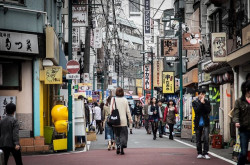
Originally published on metropolis.co.jp on October 2010

Photos by Jeremy Veverka
Ancient culture, spirituality, the Taj Mahal, curry, Bollywood, Rajasthan, camels, elephants, tigers, trains, Goa’s beaches, the Dalai Lama, McCleod Ganj, enlightenment—as a travel destination, there isn’t much India can’t offer. But the noise, pollution, mounds of garbage, incessant touts and scammers are enough to scare away many would-be visitors. In our four days in Colaba, Mumbai’s tourist trap, we were hounded with offers of hash, grass, coke, ecstasy, LSD, charley, female companionship (the STDs are complimentary, of course), and more pitches for rickshaw rides, money changing, “handmade” pashmina shawls and “priceless antiques” than we could handle.
But not everywhere in India is like this. Deep in its heart, in the newly created state of Chhattisgarh located on the gentle slopes of the Eastern Ghats, is a refuge of pristine, natural premodern culture untainted by the eyesores and nuisances of modern civilization.
 Welcome to the Bastar region, home of the Adivasi, aboriginals whose culture predates Hinduism. The area offers gorgeous forested backdrops, numerous tribal villages, an under-utilized tourist infrastructure and lower prices than many of India’s more popular destinations. In Chhattisgarh, we weren’t solicited by any touts—not one. But you’ll want to hire a guide, because over here things are so far “off the beaten track” that some of the villages can’t even be reached by car, and many of the locals don’t understand Hindi (let alone English).
Welcome to the Bastar region, home of the Adivasi, aboriginals whose culture predates Hinduism. The area offers gorgeous forested backdrops, numerous tribal villages, an under-utilized tourist infrastructure and lower prices than many of India’s more popular destinations. In Chhattisgarh, we weren’t solicited by any touts—not one. But you’ll want to hire a guide, because over here things are so far “off the beaten track” that some of the villages can’t even be reached by car, and many of the locals don’t understand Hindi (let alone English).
Townships hold colorful weekly markets, and your guide can arrange a trip. There’s a particularly big one every Monday in Tokapal, outside Jagdalpur. Group dances are also an important part of village life, and if you aren’t lucky enough to stumble upon one in progress, you can arrange a performance for as little as US$45. Local crafts include metalworking, terracotta and woodcarving. In Kondagaon, visit the workshop of world-renowned sculptor Jaidev Baghel to see a unique metalworking process using termite dung, beeswax and bronze.
Natural highlights of the region include the stunning Chitrakote Falls outside Jagdalpur, and the forested Bailadila mountain range, whose Kirandul mines contain India’s richest deposits of iron ore. Mine tours are possible, but must be arranged in advance through the NMDC (National Mineral Development Corporation) head office in Delhi. For an outdoorsy experience, you can embark on a jeep safari to spot monkeys, buffalo, leopards, bears and maybe even an endangered tiger.
 Local food focuses on rice, with liberal use of peanuts and mild spices. The free-range country chicken is delicious, but there are also plenty of fresh vegetable dishes made with tomatoes, eggplants, root vegetables, beans and okra. While in Hindu India it is forbidden to eat cows, which are considered holy animals that provide life-sustaining milk, Chhattisgarh is the opposite. The Adivasi consume cattle as food, but never drink their milk—that’s only for the calves. When you have your spiced chai in an Adivasi village, you’ll be having it black.
Local food focuses on rice, with liberal use of peanuts and mild spices. The free-range country chicken is delicious, but there are also plenty of fresh vegetable dishes made with tomatoes, eggplants, root vegetables, beans and okra. While in Hindu India it is forbidden to eat cows, which are considered holy animals that provide life-sustaining milk, Chhattisgarh is the opposite. The Adivasi consume cattle as food, but never drink their milk—that’s only for the calves. When you have your spiced chai in an Adivasi village, you’ll be having it black.
The region has a dark side as well. For more than 20 years there has been an ongoing, low-intensity armed conflict between the Naxals—India’s Maoists—and the police, resulting in poverty, the dislocation of many Adivasi villages, and casualties on both sides. But as tragic as this is, don’t let it scare you away: just like their Maoist counterparts in Nepal, the Naxals don’t target foreigners.
Although Bastar is considered safe for tourism, the ongoing conflict has made certain areas inaccessible, so be flexible and accept that things may not go according to plan. Listen to any warnings given by your guide (or the police) and never go venturing off into the jungle alone. If you do happen to meet the Maoists, smile, stay calm and greet them with a “Lal Salam” (lit. “red peace”). That’s what we did, and after a few handshakes were safely on our way.
Trip Tips
 Unless you have a passport from Bhutan, the Maldives or Nepal, you’ll need to apply for a tourist visa before leaving for India. Consult a doctor about proper vaccinations, and prophylactics for tropical diseases such as malaria. Flights from Delhi and Mumbai to the Chhattisgarh capital of Raipur start at about US$130; from there, drive south to Bastar, stopping off at Kanker, Kondagaon, Jagdalpur and Dantewada. Poor roads and slow buses make hiring a car and driver (about US$50/day) a smart move, and it’s best to go with an English-/Hindi-speaking tour guide. Try Green Gondwana in Raipur (www.greengondwana.com). Japan’s Saiyu Travel (www.saiyu.co.jp) also runs tours to the region. For a unique experience, stay at the Kanker Palace, a former Maharaja’s residence that offers a window into a bygone era as well as large, finely appointed rooms (http://kankerpalace.com). General information is available at www.chhattisgarhtourism.net.
Unless you have a passport from Bhutan, the Maldives or Nepal, you’ll need to apply for a tourist visa before leaving for India. Consult a doctor about proper vaccinations, and prophylactics for tropical diseases such as malaria. Flights from Delhi and Mumbai to the Chhattisgarh capital of Raipur start at about US$130; from there, drive south to Bastar, stopping off at Kanker, Kondagaon, Jagdalpur and Dantewada. Poor roads and slow buses make hiring a car and driver (about US$50/day) a smart move, and it’s best to go with an English-/Hindi-speaking tour guide. Try Green Gondwana in Raipur (www.greengondwana.com). Japan’s Saiyu Travel (www.saiyu.co.jp) also runs tours to the region. For a unique experience, stay at the Kanker Palace, a former Maharaja’s residence that offers a window into a bygone era as well as large, finely appointed rooms (http://kankerpalace.com). General information is available at www.chhattisgarhtourism.net.







